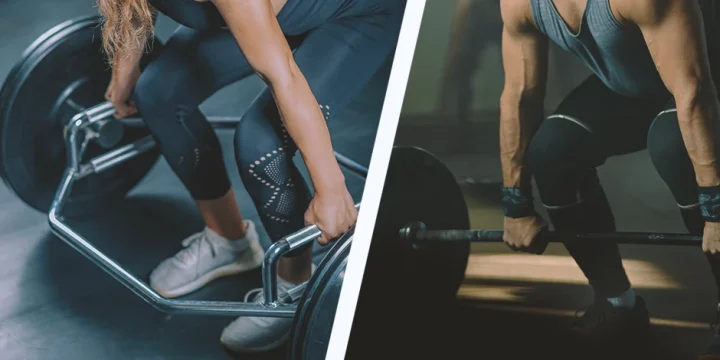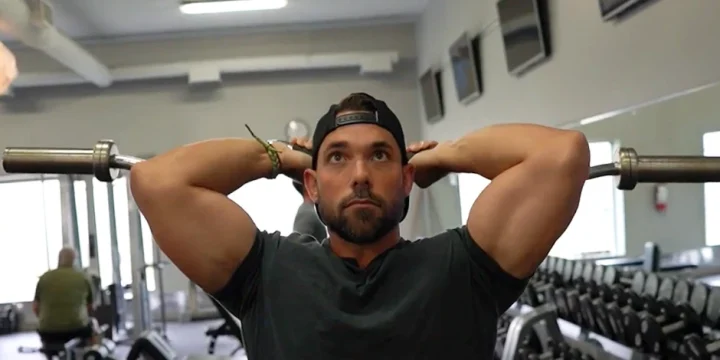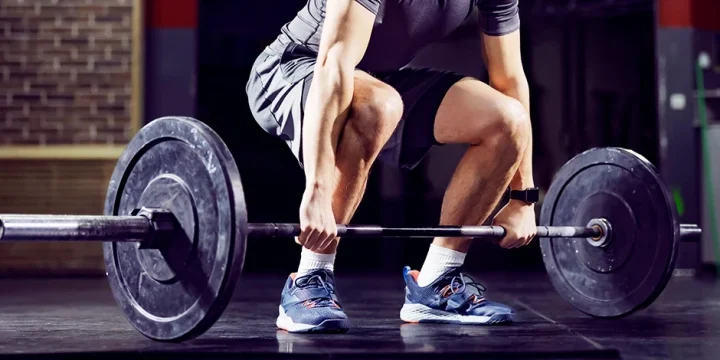As a certified personal trainer, I have to pay a lot of attention when designing workout routines to how different muscle groups will respond to movements. It can happen too easily that you end up with a concentric or eccentric phase becoming too dominant.
And while pretty much all types of weight training movements employ both types of muscle phases, it’s important to gauge when the strain is most significant.
Unfortunately, most people don’t fully understand how concentric and eccentric training impact their results.
So, I got a physiotherapist to help out with gathering the information for this post.
Quick Summary
- Pretty much every single exercise involves an eccentric movement where the muscle becomes longer and a concentric movement where the muscle becomes shorter.
- Different exercises will put more strain on one of the phases where the muscle has to work the hardest to deal with the load.
- According to Science Direct research, when it comes to exercising your muscles, there are two primary types: isotonic and isometric exercises.
- In my experience, balancing eccentric and concentric exercises leads to the most well-rounded and effective workout routines.
What Are The Main Differences Between Eccentric and Concentric Contractions?

The main differences between eccentric and concentric muscle contractions lie in the size of the muscle before and after a movement has been completed.
During one phase of an exercise, the muscle will lengthen, and in the second phase, the muscle may shorten.
Let’s take a closer look.
Understanding Isotonic and Isometric Muscle Exercises
First of all, you have to understand that when it comes to exercising your muscles, there are isotonic and isometric exercises, as shown by Science Direct research [1].
Isometric muscle exercises result in your muscles flexing while remaining at the same length.
According to studies also on Science Direct, isometric contraction is like holding the top of a pull-up or stopping the dumbbell halfway during biceps curls [2].
Isotonic exercises, on the other hand, involve two phases. And during these phases, the muscle will either lengthen for eccentric contractions or shorten for concentric ones.
Movements That Shorten Muscles

Pretty much all exercises have movements that break down into two phases where you always end up in the starting position.
A concentric muscle contraction example would be the first phase of a biceps curl.
During this phase, you pull the free weight up, and the length of your biceps shortens.
But you can also have the second phase of an exercise be concentric.
This would happen during squats, where the quads will shorten in the second part of the movement when you push your body back up again.
“Many strength building exercises involve concentric or eccentric movements, which are both isotonic contractions. Concentric movements cause the muscle to shorten, and eccentric movements lengthen the muscle.”
- Daniel Bubnis, M.S., NASM-CPT
Movements That Lengthen Muscles
Eccentric movements are those phases of an exercise where the muscle lengthens under strain.
Taking our previous examples, this would be the second phase of a biceps curl, when you lower the weight back down again and your biceps stretches longer.
On the other hand, during a squat, it’s the first phase where the quads will lengthen as you lower your buttocks.
Being aware of how those eccentric muscle contractions happen will allow you to better prepare a training routine.
Incorporating eccentric training in rehabilitation, especially for sports injuries, can significantly enhance recovery, as it allows for targeted muscle strengthening in a controlled manner.
The Benefits of Concentric Training

Focusing on the concentric contraction of an exercise can be difficult.
For example, the concentric part of a squat is pushing yourself up, but you would need an eccentric phase to get you into that low position in the first place.
But there are some exercises where this is possible.
For example, once you get to the top of a deadlift, you can simply drop the weight. Or once you get to the top during pull-ups, you could just let go rather than slowly lower yourself back down.
The advantage of this approach is that you can do more reps or lift heavier weights without adding more soreness to muscle fibers.
According to 2021 studies published in the National Library of Medicine, this kind of approach may also help boost fast-twitch muscle mass development [3].
As a personal trainer, I’ve seen this approach work with basketball players and sprinters.
Additionally, considering the benefits of eccentric training for elderly populations, such as adaptations for age-related muscle loss or mobility issues, can provide a more holistic approach to training across different age groups."
The Benefits of Eccentric Movements

Focusing more on the eccentric movement of exercises has become a common method for high-performance athletes to target very specific strength improvements.
But like with concentric movements, it can be difficult to completely isolate eccentric training.
As a certified personal trainer, I would also generally not advise such a complete shift to eccentric exercises, as you need your muscles to function in both directions.
Nevertheless, I have seen great benefits with people doing a few exercises with an eccentric approach.
For example, if you have shoulder injuries or don’t have the strength to complete a full push-up, you could lower your body down, get onto your elbows, and gradually push yourself up again.
The same is the case with pull-ups, where you could use a chair to bring your chin up to the bar and then slowly lower yourself back down unaided.
This can slowly build up more strength so that you’ll eventually be able to do the full exercise unaided.
FAQs
Is Walking Concentric or Eccentric?
Walking can involve both concentric and eccentric contraction movements. If you’re walking on a level or uphill surface, then the balance will be more concentric as your quads will be under more strain. When walking downhill, it will be more of an eccentric movement.
Is Squatting Eccentric or Concentric?
Squatting involves both eccentric and concentric movements. However, it’s the concentric upward movement that will put most of the strain on muscles and be the most difficult part of the concentric phase.
References:
- https://www.sciencedirect.com/topics/medicine-and-dentistry/muscle-isotonic-contraction
- https://www.sciencedirect.com/topics/medicine-and-dentistry/muscle-isometric-contraction
- https://www.ncbi.nlm.nih.gov/pmc/articles/PMC8473039/
About The Author
You May Also Like






